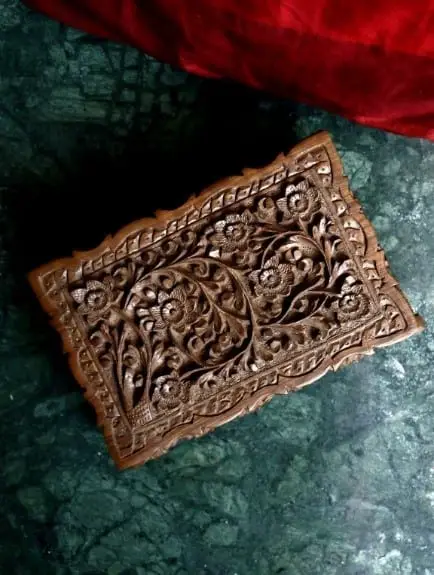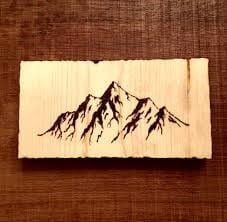What is burl wood? How much is it worth?
A great way to explore the world is to hike through the forests. You get to see so much of bio-diversity that your entire worldview might change. You also get valuable information and inspiration. You may like to use them for business.
While walking through the forest, you may have spotted a strange outgrowth on the body of the trees, sometimes even on underground trunks near the roots. Burlwood is somewhat round, popping up from nowhere and growing naturally just anywhere on the trees’ bodies.
Is Burl Wood of any Significant Value?
A short answer to this is “Yes”.
In specialty furniture and the world of wood arts, a burl slab is highly valued for its strange and complex yet attractive looks. This means when you spot that seemingly ugly outgrowth on the tree, it is not exactly bad news. It can be good news, too. Chances are that the burl may be well-grown with a minimum of decay or mold infestation.
If that is the case, it’s fit material for making a lot of things of evocative emotional value. Inspired by this theme, there are artisans, specialty furniture stores, and thousands of burl-based products on the market.
The weird roundish or circular outgrowth on the tree burl can actually be a piece of interesting raw material for many of your dream projects. Has it occurred to you how much is burl wood worth? How much can you expect from a piece of burl?
Demystifying Burl

A burl can be a wonderful material for woodwork pieces with premium applications and use cases such as the interior of an automotive or artworks. That is when the burl is of the right variety and quality.
Actually, the moment you realize the importance of a good burl, you find yourself half-set to find and explore any burl on your way to the forest. Naturally, you are thinking about how much is burl wood worth?
If finding the burl of quality is so difficult, can it be produced in factories? This takes us to one of the fundamental points of discussion in this blog post — What is burl wood?
What is Burl Wood?
The scientific community has limited knowledge about burls and how they are formed. In general, they don’t have a unified theory that explains everything to everyone’s satisfaction. In this scenario, we have no option but to accept the commonly observed and believed facts and notions about burl wood.
Burlwood is certainly an aberration to the body of the tree. There are at least two known causes for a tree to have a burl growth — one is an injury to the plant and the second is tumor growth.
Layered Burl
In the case of injury, a part of the tree is broken or infected with bacterial or fungus infections. The tree in its natural course to provide cover and protection to the weakened part takes the shape of the outgrowth. It’s the trees’ natural way to provide healing and nourishment to the damaged part. The damage itself may occur due to frost-split, breaking off a branch, bacterial, fungus, or mold infestations.
This kind of burl is called “layered burl” because the grain structure largely seems to follow that of the tree or there is little variation. This makes the inside of the burl less dramatic or picturesque. This is considered to be an inferior quality of burl. The infestations and rot elements are also high in the layered burl.
Because of the high rot content, layered burls may sometimes be past their use.
Eyed Burl

Eyed Burl is different and much valued. It’s because the entire burl grows as part of the tree so the growth is more wholesome. When you cut and process the eyed burl, you get pieces of sumptuous burl slabs. These have more dramatic and erratic grain flow making for more beautiful and haphazard patterns.
It is largely free from mold, fungus, or bacterial infections. Even the rot content can be well within manageable levels. There can be bark intrusions but not to the extent you expect them in the layered burls. Because of these reasons, eyed burls are easier to work with and deliver more value.
Overall, the chances of eyed burl delivering better value than layered burls are always high.
How to Harvest Burl: The Question of Legality, Poaching, and Ethical Harvesting?
There are two things clear so far. One, burl wood can be highly valuable. Two, burl wood cannot be produced in factories because scientists are not sure how the burl gets formed. But since it is valuable, every piece of raw burl needs to be checked and analyzed. It’s leading to the same question: how much is burl wood worth?
The rising value of good quality burl wood has led to illegal and unethical practices in the trade of burl wood. In this case, poachers encroach upon state forests and strip the burl without ensuring adequate protection for the trees. In most cases of burl poaching, the trees die.
Unsuspecting customers do not realize whether a burl is legally sourced or poached. This brings up the question of the ethical sourcing of burls. It is also important because each time a burl is harvested the tree is likely to lose its life. So, proper thought needs to be given about how much harvesting is justifiable and how to avoid poaching of burls from state farms.
How Much is Burl Wood Worth?

To get a good price is always the idea of someone harvesting a burl. To most proprietors, the excitement of laying hands on a high-value burl is enough of a reward. But money counts and you get good money for a well-turned-out burl. So, why not explore it further!
If you have a really big burl on your farm, you would be interested in exploring it for the quality it has and the kind of price it can attract in the market.
How do you go about it? Well, let’s ask how much is burl wood worth? And, a long process sets into motion.
How to Harvest?
Here, you should plan things well before you try to execute them. Don’t rush off to cut the burl and check it out. Mind you, in most cases, it also means cutting the tree. You need to have a whole lot of planning to do.
However, you should begin the process by identifying some of the specialists in this field. Some real good woodsmen with relevant experience in your vicinity are the first points of reference. If you could locate them and have meaningful conversations, half of your problems would be solved.
You can also check relevant sites, follow conversations on social media, and develop a knowledge network around your interests. All these may add up to a good deal of practical leads and with a little luck with the burl on your side, you could earn a decent sum of money.
However, there is much more money in the post-production phases and at the end-user level.
How Much Is It Worth?
A conversation on askingalot.com which was updated pretty recently (9 Feb 2020) gives a hint of recent pricing trends in the burl wood business. It says most layered burl wood is not worth the hype. An eyed burl of large size may earn you $25 to $200. The actual price would depend on the size, condition, and species of the wood.
However, you can find burl wood pieces 4 to 8-feet in diameter. These burl pieces can each bring $500 or so.
Does this give you any idea how much is burl wood worth? However, the prices can increase dramatically for some kinds of burls such as walnut burls. Depending on texture, weight, and size, the walnut burl can cost as much as $3,000 to $30,000.
When you buy it from the store, the price you may have to pay may range from $2.00 to $1.80 per pound for the first and the second 1000-pound respectively.
In terms of per board foot, you may find Straight Grains for $10, Curly Wood for $15, Birdseye for $25, and Lace Burl for $35.
Final Thoughts
Burlwood can be available from $25 to $200 and also from $500 to $5,000, and more. This is a completely unorganized market. How much is burl wood worth? Well, there can’t be a clear answer to this question.
For some people, it may be making a decent buck but that should not drive you to cut down every burl you see. Harvesting of a burl should be undertaken only when you are sure about things. You must have planned all other elements of the exercise well. You should realize that it may cause serious and potentially deadly injury to the tree. And finally, you may not end up with a prized burl.
If you have a private forest and some burls, you should develop an interest in burl wood and research about it. There is no point in being edgy. The burl may prove to be a layered one and may not bring you a handsome price.
The right course of action is meeting up with people with experience and expertise. Having meaningful conversations with these people can lead to a more logical turn to your burl wood story.







